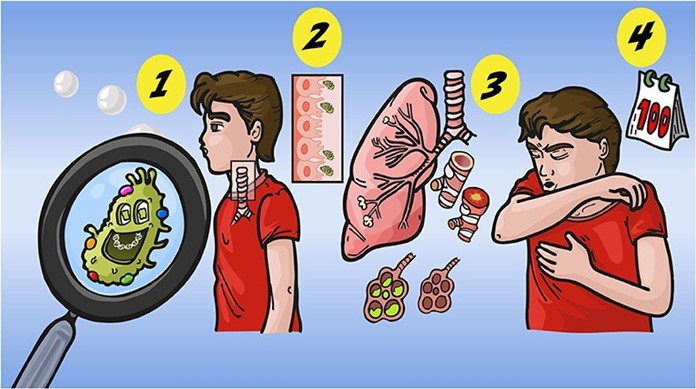A nurse in a clinic is assessing a 7-month-old infant. Which of the following indicates a need for further evaluation?
Uses a pincer grasp
Has a fear of strangers
Shows preferences towards foods
Babbles one-syllable sounds
The Correct Answer is A
Choice A: Using a pincer grasp indicates a need for further evaluation, as it is a developmental milestone that is usually achieved by 9 to 10 months of age. A pincer grasp is the ability to pick up small objects using the thumb and index finger. A 7-month-old infant should be able to use a raking grasp, which is the ability to scoop up objects using all fingers.
Choice B: Having a fear of strangers does not indicate a need for further evaluation, as it is a normal and expected behavior for a 7-month-old infant. A fear of strangers is a sign of attachment and recognition of familiar and unfamiliar faces. A 7-month-old infant may cry, cling, or turn away from strangers.
Choice C: Showing preferences towards foods does not indicate a need for further evaluation, as it is a normal and expected behavior for a 7-month-old infant. Showing preferences towards foods is a sign of individuality and taste development. A 7-month-old infant may accept or reject certain foods based on their flavor, texture, or appearance.
Choice D: Babbling one-syllable sounds does not indicate a need for further evaluation, as it is a normal and expected behavior for a 7-month-old infant. Babbling one-syllable sounds is a sign of language and communication development. A 7-month-old infant may make sounds such as "ba", "da", "ga", or "ma".
Nursing Test Bank
Naxlex Comprehensive Predictor Exams
Related Questions
Correct Answer is B
Explanation
Choice A reason: This choice is incorrect because mumps is not the common name for pertussis. Mumps is a viral infection that causes inflammation of the salivary glands, especially the parotid glands. It may cause symptoms such as fever, headache, and swelling of the cheeks or jaw. It can be prevented by vaccination with the measles-mumps-rubella (MMR) vaccine.
Choice B reason: This choice is correct because whooping cough is the common name for pertussis. Pertussis is a bacterial infection that causes severe coughing spells, which may be followed by a high-pitched whoop sound or vomiting. It may cause complications such as pneumonia, seizures, or brain damage, especially in infants and young children. It can be prevented by vaccination with the diphtheria-tetanus-pertussis (DTaP) vaccine.
Choice C reason: This choice is incorrect because the fifth disease is not the common name for pertussis. The fifth disease is a viral infection that causes a rash on the face, trunk, and limbs, which may resemble a slapped cheek appearance. It may cause mild symptoms such as fever, runny nose, or joint pain. It usually affects children and is self-limiting.
Choice D reason: This choice is incorrect because chickenpox is not the common name for pertussis. Chickenpox is a viral infection that causes an itchy rash with fluid-filled blisters all over the body. It may cause symptoms such as fever, headache, or loss of appetite. It can be prevented by vaccination with the varicella-zoster (VZV) vaccine.

Correct Answer is C
Explanation
Choice A reason: This choice is incorrect because bradycardia is not a common finding in a child who is in a sickle cell crisis. Bradycardia is a condition in which the heart rate is slower than normal (less than 60 beats per minute). It may be caused by various factors such as hypothermia, hypothyroidism, or medication side effects, but it does not indicate a sickle cell crisis.
Choice B reason: This choice is incorrect because constipation is not a common finding in a child who is in a sickle cell crisis. Constipation is a condition in which the bowel movements are infrequent, hard, or difficult to pass. It may be caused by various factors such as dehydration, a low-fiber diet, or lack of physical activity, but it does not indicate a sickle cell crisis.
Choice C reason: This choice is correct because pain is a common finding in a child who is in a sickle cell crisis. Sickle cell crisis is a condition in which the red blood cells become sickle-shaped and clump together, blocking the blood flow and oxygen delivery to the organs and tissues. It may cause severe pain in the chest, abdomen, joints, or bones, as well as symptoms such as pallor, jaundice, fatigue, or shortness of breath.
Choice D reason: This choice is incorrect because high fever is not a specific finding in a child who is in a sickle cell crisis. High fever may indicate infection, inflammation, or dehydration, but it does not indicate sickle cell crisis. However, the infection can trigger or worsen the sickle cell crisis, so it should be treated promptly with antibiotics and fluids.
Whether you are a student looking to ace your exams or a practicing nurse seeking to enhance your expertise , our nursing education contents will empower you with the confidence and competence to make a difference in the lives of patients and become a respected leader in the healthcare field.
Visit Naxlex, invest in your future and unlock endless possibilities with our unparalleled nursing education contents today
Report Wrong Answer on the Current Question
Do you disagree with the answer? If yes, what is your expected answer? Explain.
Kindly be descriptive with the issue you are facing.
